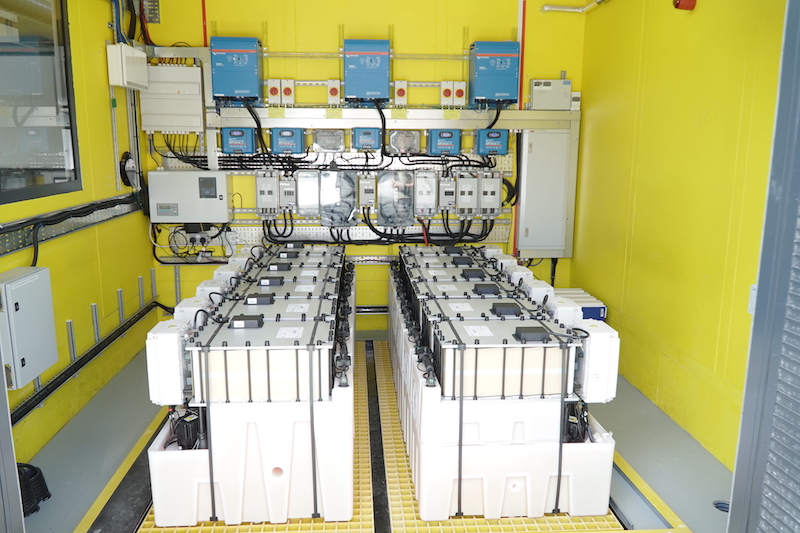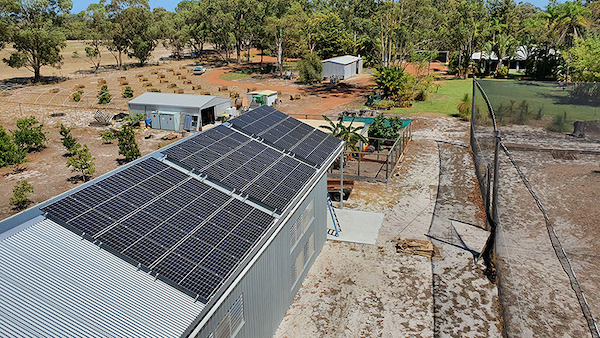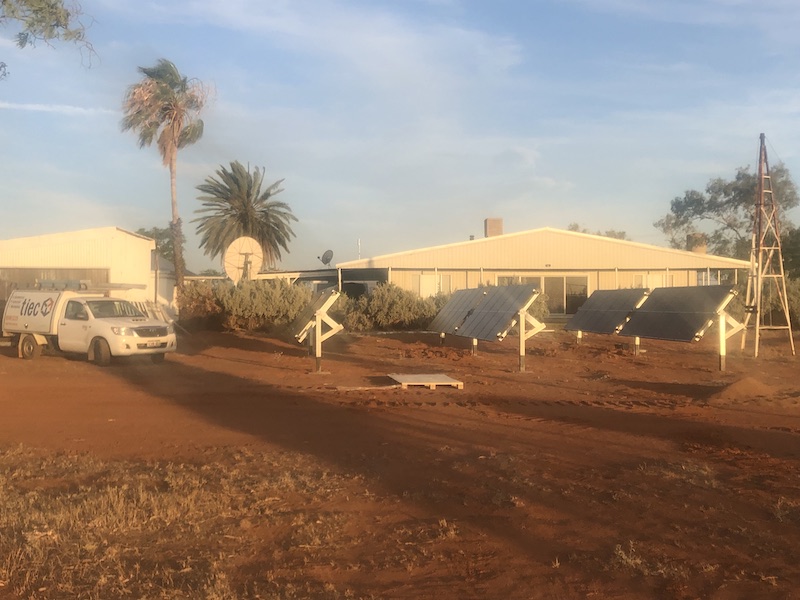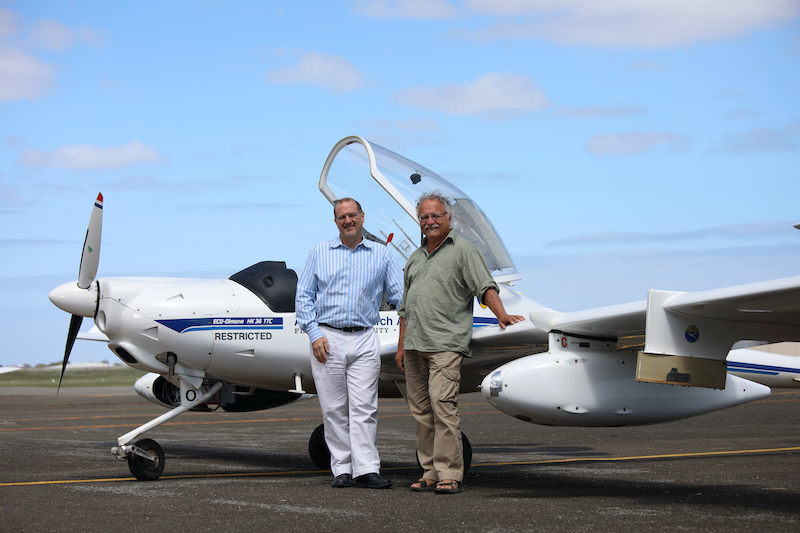Featured News
Newsroom
- Details
- In Redflow
- /

Swansea University, a research-led British university, has purchased Redflow’s unique ZBM2 zinc-bromine flow battery technology as the energy storage backbone for its Active Building demonstrator -– an award-winning classroom that generates, stores and releases solar energy at the point of use.
The microgrid is built around 120 kWh of Redflow batteries and is supplied with building-integrated, thin-film photovoltaic solar panels, as well as a solar wall that supplies the warm air to a heat-pump for space and water heating. Since being built, the classroom has proven the Active Buildings concept by generating more energy than it has used over an annual cycle, and during high solar summer months, the system will return power to the local electricity grid.
Redflow’s small 10 kWh flow battery units provided the only commercially available flow battery energy storage system that allowed accurate sizing for the 120 kWh system. Additionally, the Redflow battery operates “out of the box” with the Victron inverters and controllers that provide the power conversion for the Swansea University minigrid.
Tom Griffiths, Technology Transfer Fellow (Smart Systems), said Swansea selected the Redflow technology because of its ability to deliver 100% of the rated system energy every day, without degradation in capacity over a long – 10 year – life. “These characteristics were crucial considerations for us, and our application requires battery discharge duration of 4-8 hours depending on the time of year, making Redflow’s flow battery the ideal fit for our requirements in comparison to more conventional lead-acid or lithium alternatives.”
- Details
- In Redflow
- /

After losing power as the night horizon glowed orange with bushfires last summer, WA orchardists Jeff and Kerry Murray installed Redflow batteries to take their property off-grid and make it energy-independent year-round.
Power outages have plagued the Murrays’ farm - called Kalyakool, a Noongah word meaning “forever more” – since they bought the 34-hectare property near Gingin, 90km north of Perth, in 1994.
Mr Murray said the threat from the December bushfire was “the last straw”. “Our water comes from two bores, so without power, we can’t get any water,” he said. “The summer fire didn’t get to us, but it impinged on us through the loss of power for a whole day, which was followed by multiple outages as they brought it back on. If fire does reach us, we need energy to run the pumps to defend our property, which is why the bushfire was the last straw for us.”
- Details
- In Redflow
- /
 Solar panels installed at Yallalong Station in remote WAYallalong Station, a 348,000-hectare cattle property 650km north of Perth, has deployed a Redflow battery-based energy storage system to boost its energy independence and save thousands a year in diesel costs.
Solar panels installed at Yallalong Station in remote WAYallalong Station, a 348,000-hectare cattle property 650km north of Perth, has deployed a Redflow battery-based energy storage system to boost its energy independence and save thousands a year in diesel costs.
The cattle station, in the dry Murchison region northeast of Geraldton, can swelter for months in summer temperatures higher than 40 degrees Celsius - sometimes as high as 48 degrees Celsius.
Yallalong Station owner Lyndon Brown said a 24-hour power supply was essential to attract staff to work at this remote location. “If you want people to live out there in those isolated places, you do need 24-hour power to run all your fridges, air-conditioning and comforts of life that they expect,” he said.
- Details
- In Simon Hackett
- /
 Simon Hackett (left) with Jorg Hacker and an ARA plane
Simon Hackett (left) with Jorg Hacker and an ARA plane
"“In many cases, remote sensing data taken from fire-affected areas disappears into a black hole"
Adelaide-based Airborne Research Australia is creating free 3D high-resolution maps of devastation caused by fires in the Adelaide Hills and Kangaroo Island to help communities recover and reduce future fire risks.
The maps, which contain unprecedented detail and are available from the Airborne Research Australia (ARA) website, are intended to assist communities, emergency services agencies and researchers to plan recovery from SA’s summer infernos, to better understand fire behaviour and develop future fire defence strategies.
ARA collects data for these high-resolution maps from low, slow flights by crewed motorgliders equipped with LIDAR *, hyperspectral sensors ** and high-resolution RGB cameras ***. ARA renders this mapping data in three dimensions (3D) and animates it as flythroughs to simplify viewing. Click here for an example, which was compiled using sophisticated software donated to this ARA project by Veesus Ltd in the UK.
ARA founder and Chief Scientist Jorg Hacker, who is also Professor Emeritus at Flinders University, said this high-resolution mapping data would help plan for community recovery and future fire prevention. “In many cases, remote sensing data taken from fire-affected areas disappears into a black hole, so the general public either never sees it or sees only a down-sampled low-resolution version,” he said.
More News...
- Rural Connectivity Group chooses Redflow for off-grid energy storage in New Zealand (11 November 2019)
- Birds of Australia's Top End 2020 calendar raises money to fight gamba grass fuelled bushfires (10 November 2019)
- DDACL boosts productivity, patient care and staff morale after moving IT systems to Acurus (06 November 2019)
- New Redflow partner predicts battery boom as WA solar tariffs end (26 September 2019)
- Redflow receives order for ZBM2 batteries to power rural microgrid in North West Tasmania (29 August 2019)
- Adelaide hosts myth-busting conference on Albinism this weekend (20 August 2019)
- Gamba grass fires up threat to tourist safety in the Top End (13 August 2019)
- GigCity network to expand to Whyalla and Mount Gambier (30 July 2019)
- UltraServe Commerce debuts to reduce costs and time-to-market for midsize enterprise digital commerce initiatives (25 June 2019)
- Hawera High School celebrates its 100th anniversary this year (20 June 2019)
Off the Cuff

Simon Hackett speaks about Formula E racing on ABC Radio Adelaide
Australian renewable energy investor Simon Hackett last week spoke to Radio ABC Adelaide's Afternoons host Sonya Feldhoff about the benefits for replacing the cancelled Adelaide 500 motor race with a...
Read more
Seven simple steps for mental health in time of coronavirus
After the summer bushfires, the coronavirus pandemic and associated economic shutdown, “unprecedented” must be a standout favourite for Macquarie Dictionary’s Word of the Year for 2020. For the first time...
Read more
John Harris talks (a bit) about International Albinism Awareness Day on ABC Radio
John Harris, who has the honorary role of PR guy for the Albinism Fellowship of Australia, was interviewed by Peter Goers on the Evenings show of ABC Radio Adelaide on...
Read more
Start-ups are key to the future of everything
Nigel Lake, Executive Chair of global business advisory firm Pottinger, will tell this week's Myriad start-ups festival in Brisbane, running May 16-19, that Australia needs start-ups to protect its prosperity. Pottinger...
Read moreContact
Impress Media Australia
P: +61 8 8431 4000
E: john@impress.com.au
W: www.impress.com.au
Street:
Impress Media Australia
313 Portrush Road,
Norwood SA 5067
Click here for our location
Postal:
Impress Media Australia
Box 95, Kensington Park
South Australia 5068







